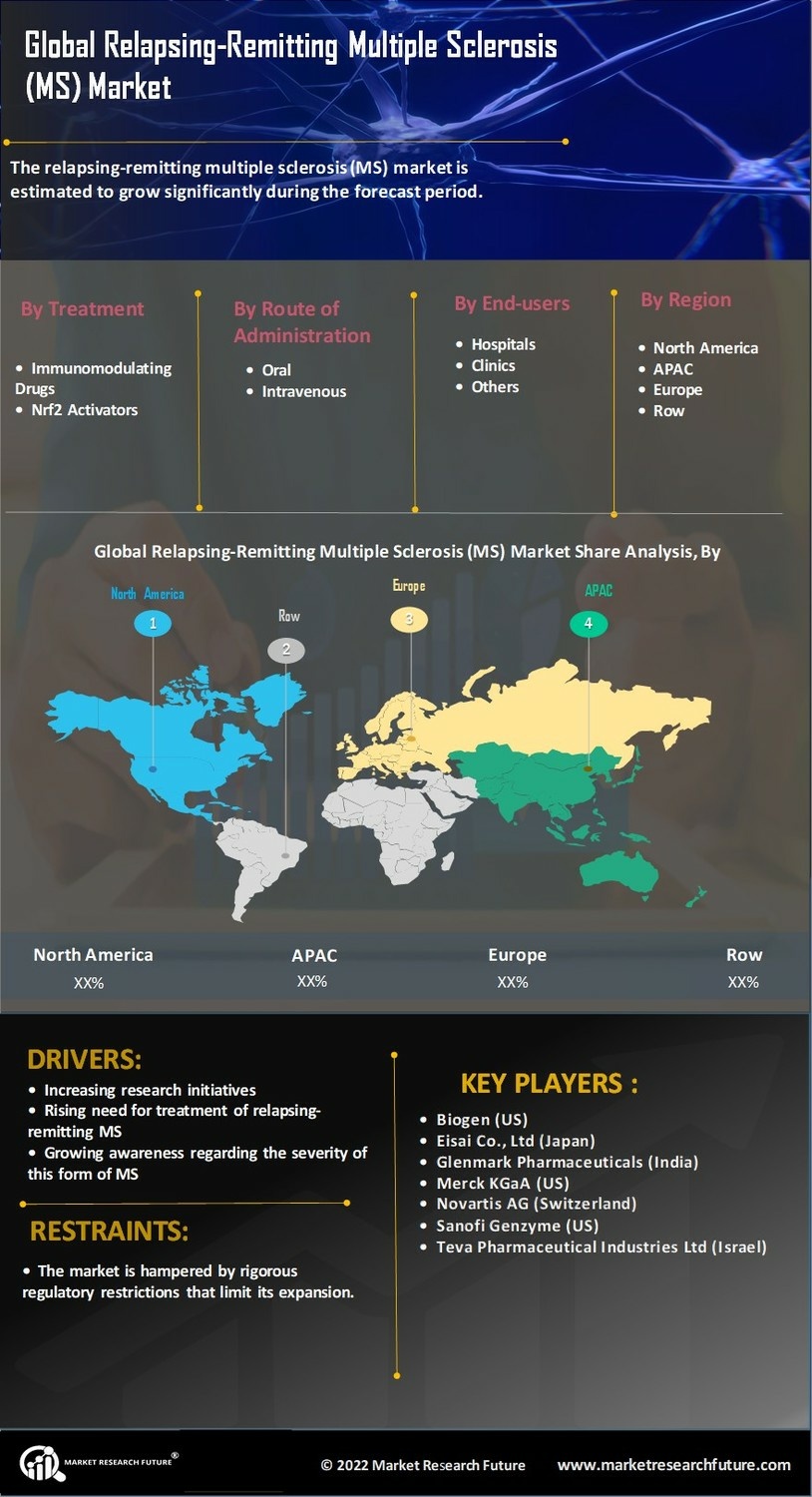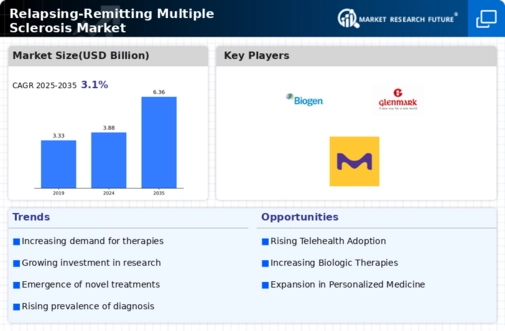Market Growth Projections
The Global Relapsing-Remitting Multiple Sclerosis Market Industry is poised for substantial growth in the coming years. Projections indicate that the market will expand from 3.88 USD Billion in 2024 to an estimated 6.36 USD Billion by 2035. This growth trajectory reflects a compound annual growth rate (CAGR) of 4.59% from 2025 to 2035. Such figures underscore the increasing demand for effective treatment options and the ongoing advancements in research and development within the industry. The market's expansion is likely to be driven by a combination of factors, including rising prevalence rates, improved diagnostic capabilities, and enhanced treatment options.
Rising Awareness and Diagnosis
Increased awareness and improved diagnostic techniques are pivotal drivers of the Global Relapsing-Remitting Multiple Sclerosis Market Industry. Enhanced public knowledge about MS symptoms and the importance of early diagnosis has led to more individuals seeking medical attention. Additionally, advancements in magnetic resonance imaging (MRI) technology have facilitated earlier and more accurate diagnoses. This trend is crucial, as timely intervention can significantly alter the disease course and improve patient outcomes. Consequently, the growing number of diagnosed cases is expected to propel market growth, aligning with the projected CAGR of 4.59% from 2025 to 2035.
Advancements in Treatment Options
The Global Relapsing-Remitting Multiple Sclerosis Market Industry is significantly influenced by advancements in treatment options. Recent developments in disease-modifying therapies (DMTs) have enhanced patient outcomes and reduced relapse rates. Innovative medications, including oral therapies and monoclonal antibodies, are now available, providing patients with more choices. These advancements not only improve the quality of life for individuals with relapsing-remitting MS but also contribute to market growth. As the industry evolves, the introduction of new therapies is anticipated to sustain the market's upward trajectory, with projections indicating a market value of 6.36 USD Billion by 2035.
Government Initiatives and Funding
Government initiatives and funding play a crucial role in shaping the Global Relapsing-Remitting Multiple Sclerosis Market Industry. Various health authorities are increasingly recognizing the need for research and development in MS treatment. Funding for clinical trials and research projects is on the rise, aimed at discovering novel therapies and improving existing ones. These initiatives not only enhance the understanding of the disease but also foster innovation within the pharmaceutical sector. As governments allocate more resources towards MS research, the market is likely to benefit from an influx of new treatment options, further driving its growth in the coming years.
Growing Patient Advocacy and Support Groups
The presence of patient advocacy and support groups is a vital driver of the Global Relapsing-Remitting Multiple Sclerosis Market Industry. These organizations play a significant role in raising awareness about MS, providing education, and advocating for better treatment options. They also facilitate connections among patients, healthcare providers, and researchers, fostering a collaborative environment for addressing the challenges associated with MS. As these groups continue to gain traction globally, they are likely to influence policy changes and funding allocations, ultimately contributing to market growth. Their efforts in promoting research and awareness are essential for improving patient outcomes and expanding treatment access.
Increasing Prevalence of Multiple Sclerosis
The Global Relapsing-Remitting Multiple Sclerosis Market Industry is experiencing growth due to the rising prevalence of multiple sclerosis (MS) worldwide. According to credible health statistics, the estimated number of individuals diagnosed with MS is projected to increase, leading to a heightened demand for effective treatment options. This trend is particularly evident in regions such as North America and Europe, where MS rates are notably higher. As the global population ages, the incidence of relapsing-remitting MS is likely to rise, thereby driving market expansion. The market is expected to reach 3.88 USD Billion in 2024, reflecting the urgent need for innovative therapies.














Leave a Comment